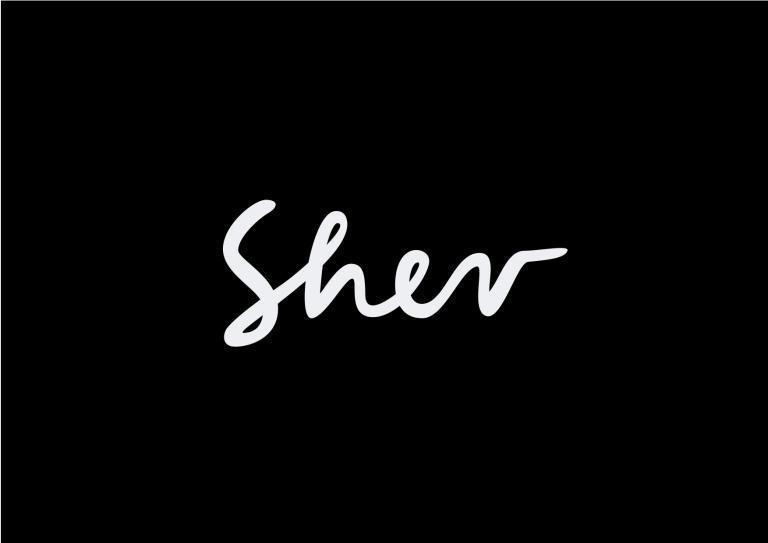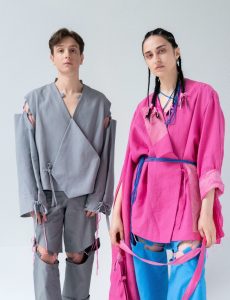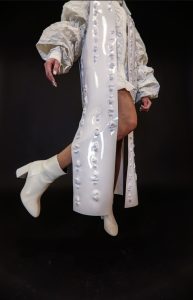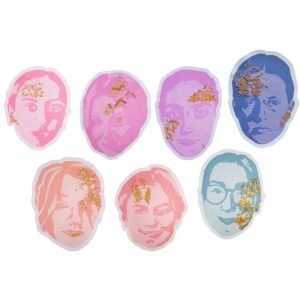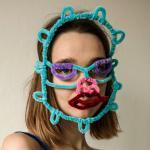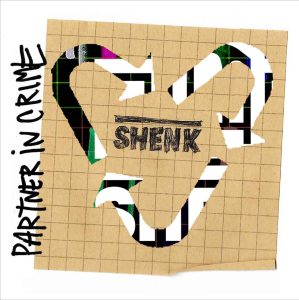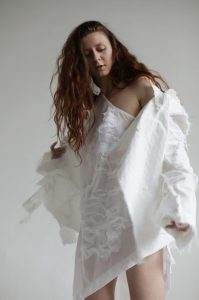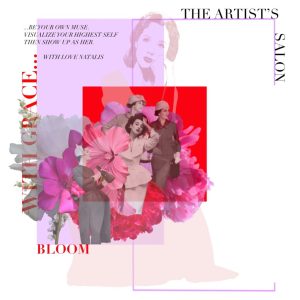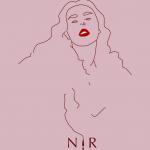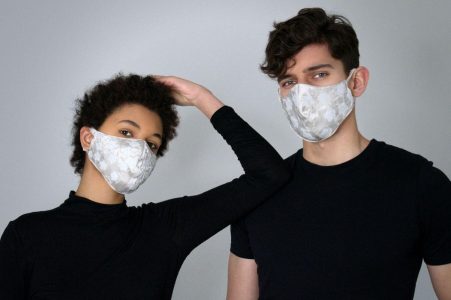Revival
Semestrálna práca „Revival“, veľmi jednoducho a jasne vysvetľuje, že teraz je najvyšší čas na zmenu módneho priemyslu! Samozrejme, možem iba snívať, že celý svet bude každý deň myslieť na životné prostredie. Ale príklady mnohých spoločností, ktoré prechádzajú na princípy ekologickej výroby ma inšpirujú. Zisťujem, ako môžem zmeniť svoj postoj k ekológii a chcem byť motiváciou aj pre teba! Aj malými krokmi môžeme zmeniť celú planétu k lepšiemu. Sme mladá generácia, ktorá vytvára budúcnosť planéty.
Inšpirácia prišla v lete pri mori, preto je voda jadrom mojej práce. Voda je náš hlavný zdroj pre existenciu. Recyklovala som kúsky rifloviny a pracovala s technikou „macrame“ (nite z recyklovanej bavlny). Prečo rifľovina? Zakaždým praním, syntetického odevu (polyester, nylon atď.), do vody sa uvoľní asi 1 900 jednotlivých mikrovlákien. Na výrobu iba 1 kg bavlny je potrebných až 20 000 litrov vody. Problémy s vodou sú vážne a je dôležité aby sme im začali venovať viac pozornosti. Mušle použité ako gombíky zdôrazňujú, že ich zbieranie má veľmi negatívny vplyv na ekosystém. Ako doplnky som vyrobila tašky technikou “macrame” a recyklovala staré čižmy. Návrat ku starým technikám a transformácia ich do modernej podoby, dáva odevu väčšiu hodnotu. Týmto projektom chcem evokovať pozornosť spotrebiteľov a výrobcov.
The semester work “Revival” which very simply and clearly explains that now is the time for sustainable fashion. Of course, we still have to dream that the whole world will be responsible for the environment. But the example of many companies that are moving to the principles of organic production – inspires me. See how you can change your attitude to ecology. With little things we can change the whole planet for the better.
We are the young generation that is making the future of the planet!
The inspiration came in the summer near the sea. This is the main reason why water is the dominant of my work. Water is our main source of existence. I recycled pieces of denim and worked with the „macrame“ technique (threads from recycled cotton). Why denim? Because denim is a material that requires and pollutes water. According to the United Nations, the production of one pair of jeans consumes about 7,500 liters of water, from growing cotton to finished products. I used seashells as a bottoms to emphasize that they are an important part of coastal ecosystems. Removing large shells or fragments has the potential to alter the rate of shoreline erosion. As accessories, I made bags using the „macrame“ technique and recycled old boots. Returning to old techniques and transforming them into a modern form, gives the garment more value. Therefore, the project would like to draw attention to the problem of water pollution.
Reuse Revivel Recycle
Ďalšie príspevky študentky*ta
Barbara Shevchuk
Ďalšie príspevky z katedry
